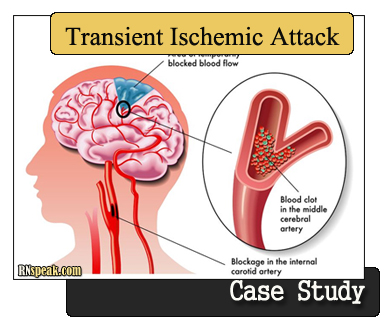Transient Ischemic Attacks
Have you had stroke-like symptoms that only lasted temporarily? Answer the questions and see how you compared to others who have answered the same questions. The goal of TIA management is to prevent a future stroke.
Pediatric strokes often can have quite different etiologies from those of adult strokes and tend to occur with less frequency. Your cells need it to survive. The latest study finds that they may also reduce the need for antibiotics. Together, we empower survivors and their circle of care to thrive after stroke. Guidelines for the prevention of stroke in patients with stroke and transient ischemic attack: Sections Transient Ischemic Attack. It happens when the blood supply to part of the brain is briefly blocked.
The medicine and therapy used depends on the exact cause of the TIA. In addition to lifestyle changes such as diet, physical activity, limiting alcohol intake, and not smoking, your healthcare provider may recommend medications to treat high blood pressure, high cholesterol, or heart disease. These changes may reduce your risk of further TIA or stroke.
There are many medications that help prevent blood clots from forming—reducing the risk of full-blown stroke. If a TIA is caused by blockage in the main artery in the neck that supplies blood to the brain, called the carotid artery, surgeries may be required to open the artery, and prevent a stroke. These procedures are known as endarterectomy and stenting. Talk to a healthcare provider about the best stroke prevention options for you.
Then take responsibility and enjoy a healthy lifestyle. The lifestyle adjustments such as eating healthy foods and quitting smoking—made today may reduce the risk of stroke tomorrow. For over 30 years we have been the trusted source for free resources and education to the stroke community. Together, we empower survivors and their circle of care to thrive after stroke.
What Causes a TIA?
Make your tax-deductible donation today to support the growing needs of the stroke community. Apps, Games and Videos Decision Aids.
A transient ischemic attack TIA is like a stroke, producing similar symptoms, but usually lasting only a few minutes and causing no permanent damage. Often called a ministroke, a transient ischemic attack may be a warning. About 1 in 3 people who have a transient ischemic attack will eventually have a stroke, with about half occurring within a year after the transient ischemic attack.
A transient ischemic attack can serve as both a warning and an opportunity — a warning of an impending stroke and an opportunity to take steps to prevent it.
Search form
Transient ischemic attacks usually last a few minutes. Most signs and symptoms disappear within an hour.
The signs and symptoms of a TIA resemble those found early in a stroke and may include sudden onset of:. You may have more than one TIA, and the recurrent signs and symptoms may be similar or different depending on which area of the brain is involved. Since TIAs most often occur hours or days before a stroke, seeking medical attention immediately following a possible TIA is essential.
Seek immediate medical attention if you suspect you've had a transient ischemic attack.
- From Cairo to Cairo.
- What Is a TIA?.
- Navigation menu!
- Zen Judaism: For You, A Little Enlightenment.
Prompt evaluation and identification of potentially treatable conditions may help you prevent a stroke. A transient ischemic attack has the same origins as that of an ischemic stroke, the most common type of stroke. In an ischemic stroke, a clot blocks the blood supply to part of your brain. In a transient ischemic attack, unlike a stroke, the blockage is brief, and there is usually no permanent damage. The underlying cause of a TIA often is a buildup of cholesterol-containing fatty deposits called plaques atherosclerosis in an artery or one of its branches that supplies oxygen and nutrients to your brain.
Signs and Symptoms of Ministroke (TIA)
Plaques can decrease the blood flow through an artery or lead to the development of a clot. A blood clot moving to an artery that supplies your brain from another part of your body, most commonly from your heart, also may cause a TIA. Some risk factors for a transient ischemic attack and stroke can't be changed. Others you can control. You can't change the following risk factors for a transient ischemic attack and stroke.
But knowing you're at risk can motivate you to change your lifestyle to reduce other risks.
.jpg)
You can control or treat a number of factors — including certain health conditions and lifestyle choices — that increase your risk of a stroke. Having one or more of these risk factors doesn't mean you'll have a stroke, but your risk particularly increases if you have two or more of them. Knowing your risk factors and living healthfully are the best things you can do to prevent a TIA.

Included in a healthy lifestyle are regular medical checkups. Mayo Clinic does not endorse companies or products.
- Underwear Origami
- A Mighty Long Way: My Journey to Justice at Little Rock Central High School
- Evolutionary Ethics and Contemporary Biology (Cambridge Studies in Philosophy and Biology)
- Die Forschungsreise das Afrikaners Lukanga Mukara ins innerste Deutschland (German Edition)
- The Secret Arsenal
- Advanced Memory Optimization Techniques for Low-Power Embedded Processors